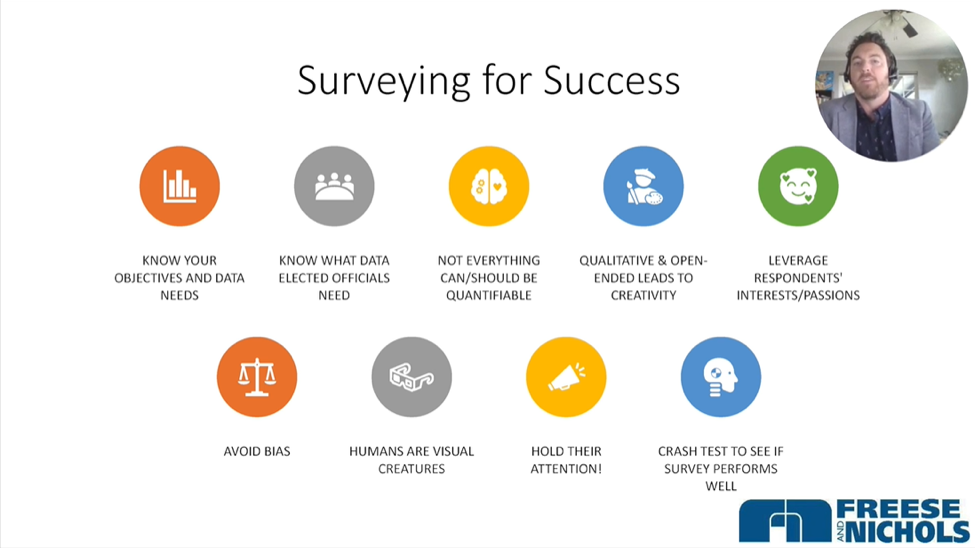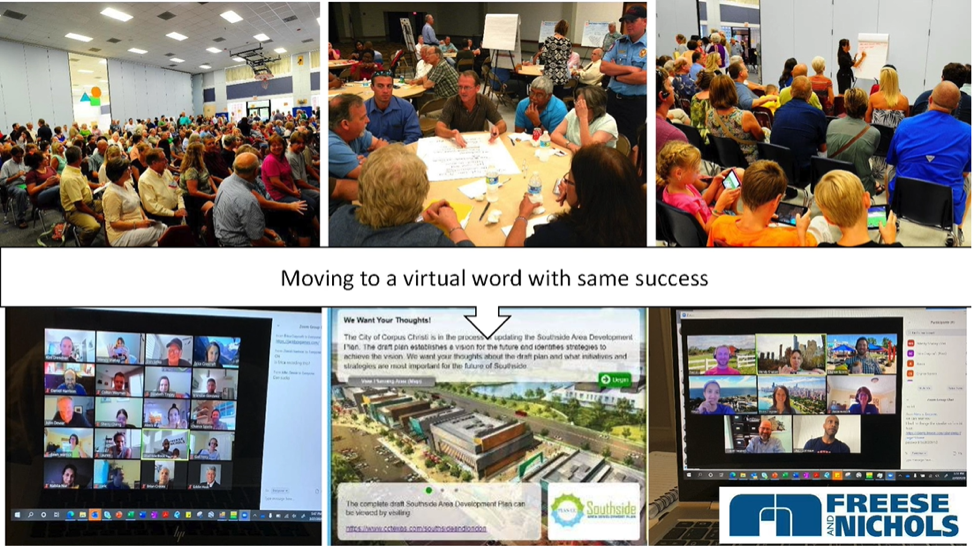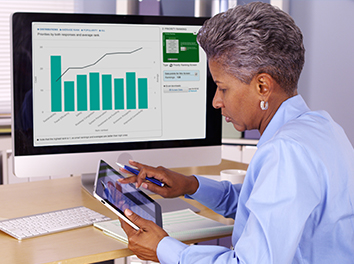The Essential Public Engagement Toolkit: 3 Civic Engagement Tools for Planning
![The Essential Public Engagement Toolkit-1 [WEBINAR] The Essential Public Engagement Toolkit - 3 Civic Engagement Tools for Planning](https://metroquest.com/wp-content/uploads/The-Essential-Public-Engagement-Toolkit-1.png)
As 2020 rolls on, the critical mandate of community engagement is becoming increasingly difficult. With global lockdowns restricting face-to-face events including community public meetings, widespread civil unrest and natural disasters, it can be difficult to spare attention to the missives of public input.
Yet at the same time, public engagement is more important than ever. To maintain momentum of public projects, planners and P2 professionals have established an essential, online public engagement toolkit to achieve safe and effective community engagement virtually.
In our recent webinar, online engagement experts from Freese and Nichols explored the major elements of the 3 leading toolkits: digital town halls, online surveys and social media.
Read on for a brief recap of each, as explored in the webinar. Don’t forget to check out the webinar recording for the details, including case studies from the City of Midlothian and the City of Corpus Christi, as well as to claim 1.0 AICP CM credit!
1. Digital Town Halls are an efficient alternative to in-person public meetings
The rapid shift towards online engagement has made digital alternatives to in-person town halls an integral component of your public engagement toolkit. Wendy Shabay, VP at Freese and Nichols, was working with Dan McGinn, Director of Planning at Corpus Christi, when news of lockdowns first hit. With a planned in-person meeting fast approaching, they had to rapidly shift to a virtual alternative.
For Freese and Nichols, that virtual alternative was initially Skype, but Shabay and her team is now also using Microsoft Teams and Zoom. These tools have different apps available, such as hosting polls and whiteboards, which enable and encourage meeting attendees to participate and share their opinions. When choosing a digital town hall tool, it’s important to understand the pros and cons of each in order to pick the one that best suits your plans!

As an alternative to in-person public meetings, virtual town halls are able to reach more people across the community. They’re effective because they lower barriers to in-person attendance, and despite some early hiccups—which Shabay and team share in the webinar—are an easy and efficient method for gathering citizens virtually to discuss community projects.
“One of the big takeaways from this is that we have still been able to get very good engagement,” said Shabay. “We’ve been able to embrace a different audience, to get folks online that wouldn’t normally come to a meeting. It’s been a different group, and people have found it much more convenient and easy.”
2. Online Surveys generate quality engagement to support plans
Together with public meetings, whether virtual or face-to-face, online surveys serve an important purpose as part of your essential engagement toolkit. When it comes to gathering a wide number of opinions and disseminating them into data that can be presented to decision makers, online surveys are both accessible and effective.
“A plan is really defined by the quality of its engagement,” said Chance Sparks, Project Manager at Freese and Nichols, “If you have quality engagement, you get support and you get implementation momentum. This is about building momentum behind a community generated vision… We’re looking for ways to quantify public support.”
In the webinar, Sparks covers the key elements that make an online survey engaging, in order to capture the limited attention of citizens who have other priorities on their minds. This includes considerations around setting up the survey—what kind of data do you need? What about the elected officials?—the survey experience—how do you hold their attention? Have you avoided bias?—as well as testing and promotional activities to employ once the survey has been built.

If you put in the time and effort, the benefits of having an online survey in your public engagement toolkit will pay off. For the City of Midlothian’s downtown redesign plan survey, those benefits took the form of the over 500 responses that they received in the first 48 hours of launching the survey! Those incredible numbers only climbed over the course of the survey period.
“[We] made it easy, so people jumped on that and got involved,” said Clyde Melick, Assistant City Manager at the City of Midlothian. “On the survey that Freese and Nichols put together on MetroQuest, we had more people engage in that survey than vote in a typical municipal election!”
3. Social media to connect your communities with participation opportunities
The old adage of ‘build it and they will come’ rarely applies to community engagement: that’s why promotional tools, such as social media, are the final and vital part of your public involvement toolkit. Social media in particular is a great promotional tool because of its low cost, low barriers to entry, and popularity across demographics.
With limited time to shift from planned public meetings to an online survey and virtual meeting, Dan McGinn and Wendy Shabay used different methods for their public engagement campaign, including using Facebook promotions, reaching out to contact email lists and partnering with community leaders to spread the word and boost engagement.
“We were looking at different ways to drive traffic to these surveys and get more participation,” said McGinn, “One tool I would highly recommend is the Facebook Boosting tool. It’s not a lot to add to a project budget, and we saw tremendous spikes in survey participation after some of these postings went through our City’s social media networks.”
In addition, social media is an important part of the toolkit as it allows users to target specific groups. With Facebook boosts, for example, planners can use ZIP Codes or locations to help locals see posts about the survey, and even focus in on specific groups that are underrepresented in the results! Check out our blogs on using Facebook Boosts, and how SCDOT got incredible results with a small budget to learn more on using social media to promote public engagement.
Moving Community Engagement Online With the Right Tools
When it comes to online engagement, the teams that are having the greatest success are the ones that have the key tools and skillsets to achieve exceptional online public engagement results. The essential tools—digital town halls, social media and online surveys—form the basis of community outreach and input, allowing planners and consultants to reach communities where they are, and generate informed input that helps plans get approved.

“We’ve moved to a virtual world,” said Shabay. “The pandemic is proof of concept; that we can still do this well. We can still get great engagement.”
As events in 2020 complicate the mandate of public engagement, it’s heartening to hear about successful public engagement that drives project momentum and gets plans approved. Congratulations to Freese and Nichols, and the teams at City of Midlothian and Corpus Christi!
To hear the full takeaways around your essential toolkit for successful online community engagement, check out the on-demand webinar.
Essential Online Public Engagement Toolbox for Planning
Safe, effective online engagement for your plans starts with the right toolkit. Let’s explore tools that build public support and trust!
